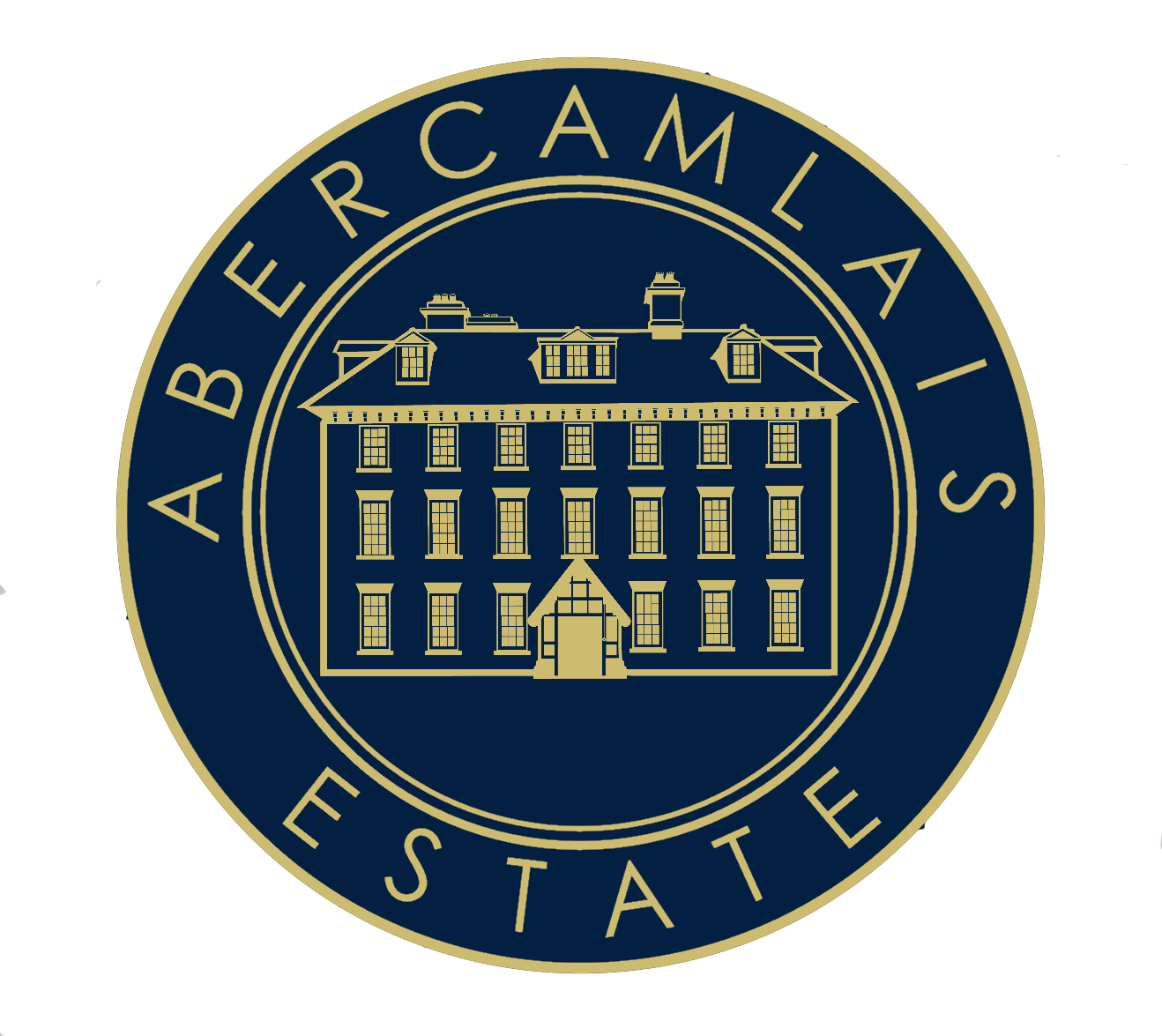The Bridges over the Usk
A narrow Elizabethan stone bridge spans the river Usk, which runs through the grounds. In the 19th Century this was widened over the upstream cutwaters and a further arch introduced. The bridge was built by Thomas ap William, Vicar of Llanspyddid (known as Vicar Gwyn); owner of Abercamlais in the 16th Century. There is a carved ‘1582’ under one of the arches. Before the bridge was built the only way to cross the river was to use the old ford – and to this day the ford is only usable in high summer.
200 yards downstream there is a wrought iron suspension bridge springing 85 ft across the river, built by Crawshay Bailey in 1850 or thereabouts as a short cut to the walled garden.
‘In the grounds of the Abercamlais estate adjoining the A40 road about 6 miles west of Brecon, a slender suspension bridge of 80 ft span crosses the River Usk. Built circa 1830, it is attributed to Crawshay Bailey, the famous iron master of Nantyglo in the eastern Ebbw Vale. Two 11/8 in. diameter wrought iron rods on each side, spaced 2 ft 8 in. apart vertically, form the suspension cables, their screwed ends passing through cast-iron end posts, 6 ft high and spaced 2 ft 2 in. at the bottom and 3 ft 4 in. at the top, to which they are tensioned by nuts. Every 10 ft, iron rods—hooked over the top cables and looped around the lower—carry transverse 4 in. by 3/8 in. flats as deck-bearers. Between these, short hangers attached to the lower cables carry 11/2 in. by 1/2 in. bearers. The footway is of four 4 in. by 3/8 in. iron flats, spaced to give a width of 1 ft 6 in. and riveted to the wide deck-bearers but resting freely on the others. The bridge has been kept in excellent condition by the owners.’
Source: Civil Engineering Heritage, Edited by Roger Cragg, 1986.
‘Mid-to later C19 iron suspension bridge over the Usk, said to have been built by one of the Baileys of Glanusk, to a remarkable design with minimal ironwork.
Suspension bridge, of iron rods with thin flat iron strip for the decking. Two long iron rods each side, bolted to cast-iron posts each end, with thick wire hangers wound around both rods and then continued down to carry flat pieces of iron under the decking. The decking is of four parallel strips of iron.
The cast-iron posts are thin, splayed away from each other and joined at the tops by a hooped piece of iron rod. Each post has four holes, two for the main rods, and two for diagonal outer rods that run parallel into the ground, the upper ends bolted just below each of the main rods. Iron gate at South end.
Reason for Listing: Included for its special historic interest as a remarkable piece of Victorian engineering on a minimal scale.’
Source: Cadw
‘A remarkable piece of Victorian engineering on a minimal scale.’
Source: Historic Wales Report
“I remember…flying down the path to our particular playground, the old croquet lawn above the river, where there was a rustic summerhouse with rough wooden seats and a stone topped table. Here Nanna would sit in the afternoons with her sewing, while we played on the lawn or ran down the path to where the iron suspension bridge crossed the river, where we jogged ourselves up and down swinging and swaying over the brown sparkling water flowing endlessly over the red slabs and round the rocks, watching for trout and hoping perhaps to see a salmon going up.”
Memoirs of Frances Mary Barbara Slater (nee garnons Williams), 1889 – 1968.




















